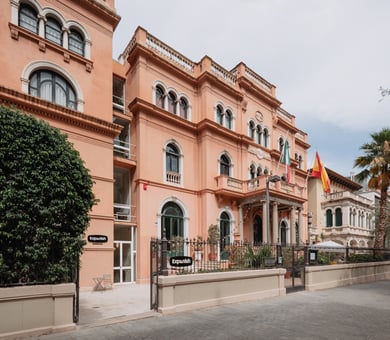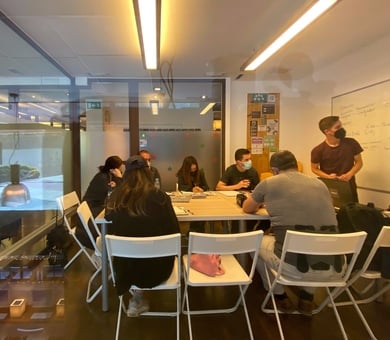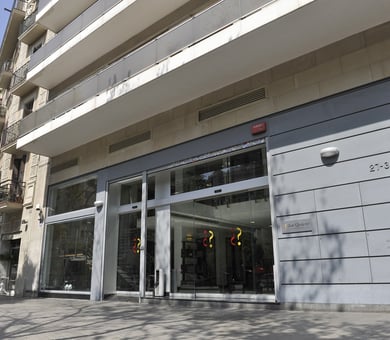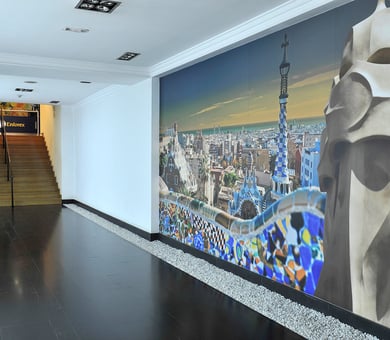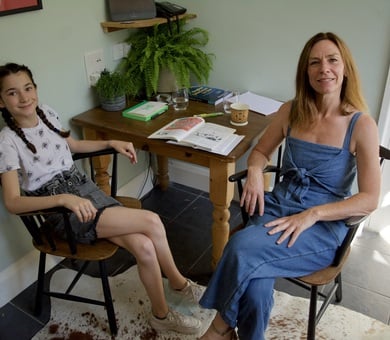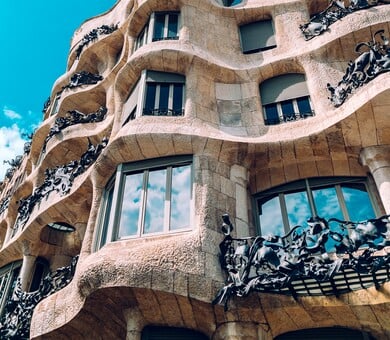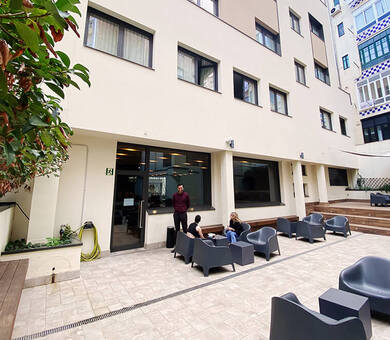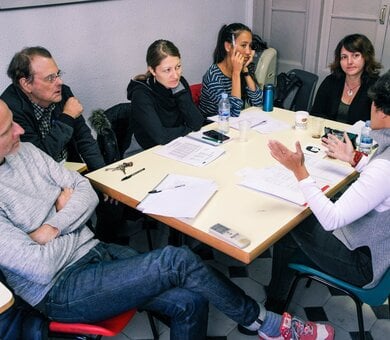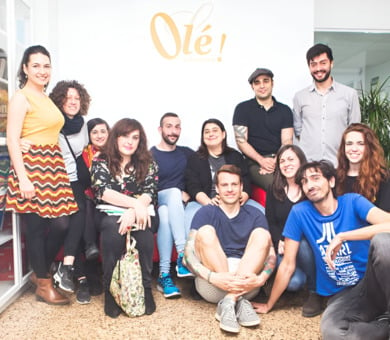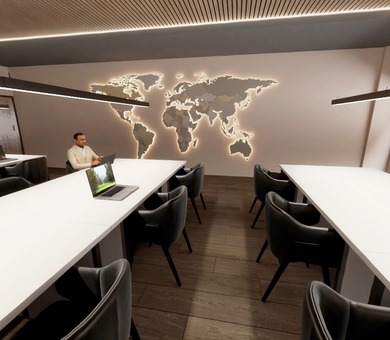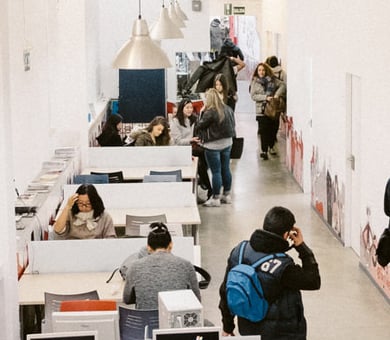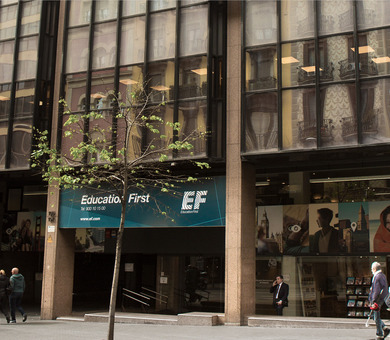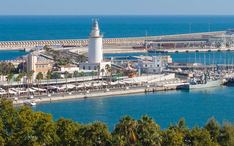Best Spanish schools in Barcelona by category - student age group, leisure/fun
23 language schools in Barcelona from 99€ for a 1 week Spanish course
Barcelona ratings & opinions
How our students rated their experience in Barcelona
What our students said about Barcelona
Great city, lots of sights, friendly people. It's well worth it. However, there were a lot of tourists in Barcelona around Easter, which will certainly increase towards the summer. This means that parts of the city are overcrowded and accommodation costs are very expensive. This also has an impact on rents in general. Residents are unable to pay the rents as salaries are very low compared to Germany. Some people live in AirBnB shared flats with a very small bedroom, shared kitchen and living room because they can't afford their own flat despite being employed. I myself lived in a room in such a shared flat and was able to experience this.
It is one of the nicest places to live in Europe. Many museums and Gaudi's architecture make your private time enjoyable. However, you can't count on the cleanliness of the city. You should always take care of your belongings and keep an eye on them.
It was my first time in Barcelona and I liked it so much. There are a lot of sightseeings. Good public transport system. Comfortable climate.The city is comfortable for going by foot and for bicycles.
Great city with many activities and sights. But the accommodation and entrance fees have become very expensive. Not really clean either... disadvantage of a big city.
Very beautiful, great architecture, close to nature (sea and mountains), nice people attuned to tourists. There are just a lot of cars and motorbikes on the road.
A very beautiful city! The buildings are old, historical and very interesting. Barcelona is a city that I must visit again soon.
Barcelona has the mix of everything: culture, sea/beach, warm climate. Highly recommended and my favorite :-)
I'm in love with both the city Barcelona, the climate, the people who live there and tourists as well.
very good food, good sightseeing, many other interesting places; it's fun to explore the neighborhoods
Excellent city for tourists but not students because people speak English very well.
What language school directors said about Barcelona

There is much history and culture, unique modernist masterworks by Gaudí, an exciting nightlife, excellent weather and magnificent gastronomy.
Most recent student reviews of language schools in Barcelona
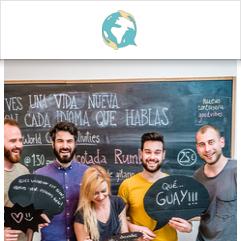
super teachers and organisation, flexibility, location, air conditioning, no need to buy the book
22 July 2024
Course: Intensive Course - 3 weeks
Student age: 33 years
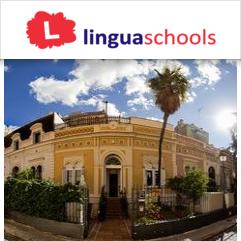
Its not bad, and supplies good opportunity to study Spanish.
15 July 2024
Course: Intensive 10 - 2 weeks
Student age: 39 years

Modern, organisation, teachers professional, teaching materials, the rooms are great
12 June 2024
Course: Intensive Course - 2 weeks
Student age: 62 years

Great teachers, all very kind and helpful
10 June 2024
Course: Intensive Spanish 30 - 2 weeks
Student age: 35 years
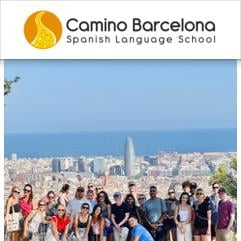
I liked locality, teachers, especially xavi, good value for money.
No
29 April 2024
Course: Intensive Course & Conversation - 1 week
Student age: 0 years
Information about Barcelona
- Manageable size.
- Easy to navigate metro system.
- Exciting, different neighbourhoods to explore.
- More economical than other larger cities in Europe.
- Pickpocketing in tourist areas is commonplace
- Locals are more reserved than in smaller cities and towns.
Key Facts about Barcelona
- Price index excluding rent: 63* (37% cheaper than New York)
- Price index including rent: 51* (50% cheaper than New York)
- Price index food only:55* (45% cheaper than New York)
- Big Mac price (Spain average):
4.29 € (7% cheaper than in USA)
- Residential voltage: 230 V
- Frequency: 50 Hz
Weather in Barcelona
Events in Barcelona
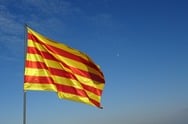
11 September 2024La Diada is the National Day of Catalonia. It commemorates the Catalan village's last defence against the Bourbon army in 1714. It is mostly celebrated in Parc de la Ciutadella and is a very festive day where concerts are held and a parade of flags are displayed all around Catalonia.
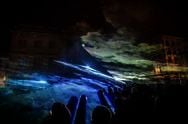
24 September 2024The city of Barcelona's festa major is a massive street party with free shows and concerts and many traditional Catalan events like Castellers, Gegants, and Correfocs. The festival ends with an impressive fireworks display which includes Barcelona's famed Magic Fountains.

05 January 2025 - 06 January 2025The festival celebrates the arrival of the Three Kings to the city. After being welcomed at the port by the Mayor, a big parade is held with floats and musicians where sweets are thrown into the crowd. This parade is held on the eve of the Epiphany, when Spanish children open their gifts.
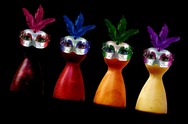
February 2025The most representative parade for the Carnival week starts with the arrival of the Carnival King - Rei Carnestoltes - in the Plaza de Sant Jaume. This is the main event of carnival, but the city will be full of celebrations.

February 2025 - July 2025The Guitar Festival of Barcelona is one of the biggest events for the guitar players and music lovers of the world. The line-up always includes amazing shows and some of the biggest names in the industry.

03 March 2025Taking place in the old town of Gràcia, Sant Medir in one of the most typical festival of Barcelona. It is famous for its parades during which people on the floats, trucks and horses throw sweets and toffees to the public.
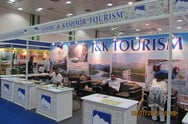
March 2025Held in the Fira, the international exhibition center of the city, the Catalonia International Tourism Fair attracts would-be tourists and globe-trotters to exchange information, plan their next adventures, and discover new destinations.
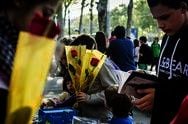
23 April 2025The Catalan equivalent to Valentine's Day. The main event is the exchange of gifts between lovers, family and friends. Traditionally, men are given a book and women a rose. On this day streets are lined with booksellers and rose vendors and the whole city is out and about.
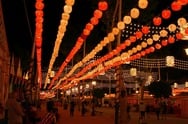
27 April 2025 - 06 May 2025The most famous Andalusian Festival consists of food, dancing, music and fun attractions. The Feria de Abril of Barcelona is held every year in the Parc del Forum in the Diagonal Mar area.
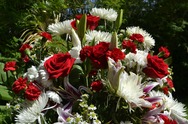
May 2025An hour away from Barcelona in a beautiful medieval town called Girona, the arrival of spring is celebrated with an incredible festival known as "Temps de Flors". During this festival the streets are filled with floral works and exhibitions. Monuments and churches are also decorated with beautiful colourful flowers making this time of the year the perfect time to visit the city.
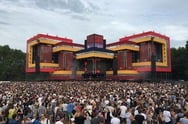
May 2025 - June 2025Established in 2001, Primavera Sound has grown to become a reference point for urban music festivals. Because of its pop, rock and dance music, the festival has succeeded in bringing together various generations, creating an unique event.
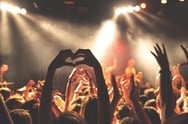
June 2025Sonar is an arts, design, and electronic music festival held annually in Barcelona in July. It offers 3 days and 2 nights of concerts starring many well-known and various up and coming DJs. The perfect opportunity to share a great experience with friends!
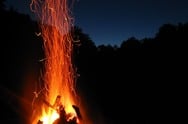
23 June 2025 - 24 June 2025On the 23rd of June, the night before San Juan, massive celebrations take place in Barcelona to mark the arrival of summer. One of the most exciting nights of the year the city becomes the scene of bonfires, fireworks and many celebrations for the "Night of Fire".
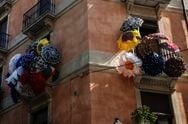
August 2025Streets compete for the best decoration; neighbours eat supper together on long tables in the street and outdoor concerts go into the wee hours of the morning. Each neighbourhood in Barcelona has its own festa major, but that of Gràcia has achieved international status.
What to do in Barcelona
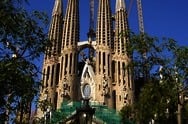
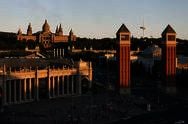
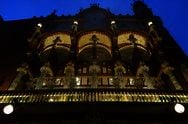
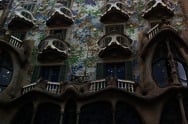
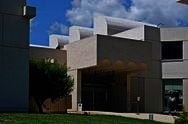
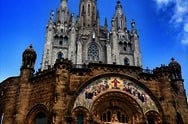
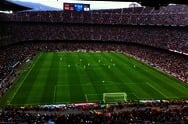
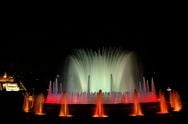
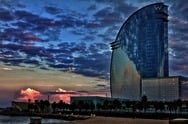
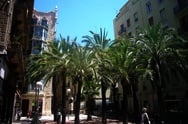
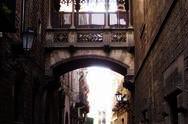
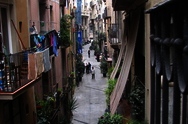
Arrival airports
Public transportation to city center:
Every 30 minutes, 20 minutes.
Main stops: Barcelona Airport, Passeig de Grácia
Every 5 minutes, 25 minutes.
Main stops: Aeropuerto, Plaça Espanya, Plaça Catalunya
Every 10 minutes, 30 minutes.
Main stops: Aeropuerto T2, Collblanc, Diagonal, Fontana
Taxi: 15 minutes drive to city center of Barcelona
Public transportation to city center:
Every 60 minutes, 100 minutes.
Main stops: Girona Airport, Girona + Girona, Barcelona Sants + Barcelona Sants, Pl. Catalunya
Every 60 minutes, 140 minutes.
Main stops: Girona Airport, Girona + Girona, Barcelona City Center
Taxi: 60 minutes drive to city center of Barcelona
Public transportation to city center:
Every 240 minutes, 140 minutes.
Main stops: Reus Airport, Tarragona + Tarragona, Barcelona - Gran Via 618
Taxi: 75 minutes drive to city center of Barcelona
Q&A - Questions about Spanish courses and schools in Barcelona
- I would like to get information about English courses in Barcelona, prices and so on.“In Barcelona we only work with Spanish schools, but some of these schools, not many, offer private English classes (not in groups). If you are interested, please let us know the starting date and duration in weeks so that we can give you a quote.
”Rubén De Haro, LanguageCourse.Net - Sep 06, 2024I would like to take a 24-week Spanish course in Barcelona, but don't have much money for accommodation and would also like to work while in Barcelona taking the course. Do you have any good tips for me to make this dream come true?“I would start looking at Workaway, for example. There are websites where you can find work for board and lodging and there are projects also in Barcelona. You might find a good match there and be able to combine this with a Spanish course through us. I also used a website for me personally and had really great experiences (and saved a lot of money).
A second option would be to contact (youth) hostels in Barcelona directly and ask if they might be looking for someone for the period you are in Barcelona. It happens quite often that people work in a hostel and then get a room, etc, in return. You never know and I really think the trip will be much more affordable.
I hope this gives you a push in the right direction. Let me know as soon as it works out and I will help book the Spanish course.
By the way, our office is in Barcelona, so further general tips you can definitely ask us!
”Robin Rebecca Pietersma, LanguageCourse.Net - Sep 20, 2023I am looking for a school with several Dutch people, where I can take Spanish lessons for 5 to 6 weeks.“Linguaschools in Barcelona is set up by Dutch people and I think it fits in well with your wishes, although we can never guarantee that Dutch people will go there. And of course it helps your Spanish tremendously if you have to speak directly in Spanish. It is a condition from the Cervantes accreditation that Spanish is spoken directly in class, even with beginners. So prepare for that. But at Linguaschools, I think you're going to feel at your best. ”Robin Rebecca Pietersma, LanguageCourse.Net - Aug 15, 2023Do I have to take a beginner's course if I haven't studied before? I have lived in Spain so I know some Spanish but I have never studied the language formally.“No, if you already know some Spanish, you will not study in a beginners' group. Online or on the first day, you will take a language test that shows your level, and then you will be placed in a group at the appropriate level. ”Louise Granath, LanguageCourse.Net - Jul 27, 2023Do you have evening classes with lessons more than one day a week?“Most evening courses have classes one or at most two days a week.”Louise Granath, LanguageCourse.Net - Jun 29, 2023I am looking for a Catalan Course. Do you have any options?“At the time of writing, Expanish offers Catalan private lessons. It's possible to book 10 or 20 lessons per week.”Ana Carolina Dos Santos, LanguageCourse.Net - May 03, 2023I would like to do an English course of 6 months in Barcelona, that is why I am contacting you to ask for information about the requirements and prices of the course.“At present (2023) we do not offer English courses for adults in the city of Barcelona.”Rubén De Haro, LanguageCourse.Net - Apr 17, 2023If the embassy does not grant me a visa, will I get my money back?“This will depend on the school you choose, although most schools have agreed that students who book online on our website will benefit from preferential cancellation fees in the event of a visa refusal, and in this case will never exceed €180.
”Rubén De Haro, LanguageCourse.Net - Mar 03, 2023I would like to book Catalan lessons for me, my mother and my sister. Is there any school that offers a such programme for us?“The school Expanish in Barcelona offers private Catalan lessons. Based on your requested dates we can send more information about it.”Ana Carolina Dos Santos, LanguageCourse.Net - Nov 23, 2022Can I book a course over the phone?“We are happy to give you advice and guide you on the phone, but in order to book a course for you we need you to make the booking on our webpage. ”Louise Granath, LanguageCourse.Net - Nov 08, 2022I would like a course for my 14-year-old son and also an adult course for me. We have an apartment in Barcelona and do not need accommodation. Do you have any options?“In Barcelona, World Class Language School offers Junior Programmes in the summer, and parents can also book a General Spanish Programme and attend the programme on the same dates and location. Please let us know what your preferred dates are and we can send you more information.”Ana Carolina, LanguageCourse.net - Apr 26, 2022FAQ - Frequently asked questions about Spanish courses in Barcelona
- I need to enrol my 18 year old brother in a school to learn Spanish in Barcelona.“At the time of writing (2024), we have several partner schools in Barcelona offering Spanish courses. Contact our agents and we will be happy to help you find the best option for you. ”Veronica Romualdi, Language Travel Consultant from LanguageCourse.Net - Apr 02, 2024Where are the student residences located in Barcelona, and how far are they from the course venue?“Usually, and not only in Barcelona, school residences are almost always within walking distance of the school building (20 - 25 minutes' walk), while flats and homestays vary depending on the availability of the period, and the type of accommodation. (20-30 minutes or more by public transport)”Antonio Zoppo, Language Travel Consultant from LanguageCourse.Net - Jul 24, 2023I would like to know if there are any Spanish classes in Barcelona that are taught in the evening from Wednesday to Saturday“We have some options for evening courses running in Barcelona once or twice a week. At the current moment of writing, on weekends the schools are closed.”Ana Carolina Dos Santos, Language Travel Consultant from LanguageCourse.Net - Oct 17, 2022I would like to learn Spanish in Barcelona for 1 or 2 weeks, but in a class with seniors (50+). Do you offer this too?“In Barcelona there are certainly schools that offer 50+ courses.
Do bare in mind that senior courses are most of the time only offered a few times a year. If you therefore have specific dates in mind and the dates offered do not correspond, you can also always join a standard course at a school of your choice. What could help with that choice is checking the student reviews of 50+ students and checking the average ages of the schools throughout the year in the school profiles, so the standard course is closer to what you're looking for.”Robin Rebecca Pietersma, Dutch Consultant from LanguageCourse.net - Jun 25, 2021Didn't find what you are looking for?Interested in a specific type of course? See our reviews of Spanish courses & camps for teenager and children in Barcelona or other 33 different Spanish course types in Barcelona.Interested in language travel to other cities? Have a look at Spanish language schools in other cities in Spain such as Alicante, Almeria, Almuñécar, Barbate (Cadiz) ..., Bilbao, Cadiz, Castelldefels, Denia, Dosrius (Barcelona), Granada, Ibiza, Jaén, Jerez de la Frontera, Lanzarote, Las Palmas, Logroño, Madrid, Malaga, Marbella, Murcia, Nerja, Palma de Mallorca, Pamplona, Platja d'Aro (Costa Brava), Prado del Rey, Puzol (Valencia), Ronda, Salamanca, San Pedro de Alcántara, San Sebastian, Santander, Santiago de Compostela, Sevilla, Soria, Tarragona, Tenerife, Úbeda, Valencia, Valljunquera, Vejer de la Frontera, Vigo, Zaragoza or see our list of all schools in Spain. You may also want to consult options outside Spain for learning Spanish.Show moreLanguage School Destinations
Spanish schools in Spain- Alicante (8)
- Almeria (1)
- Almuñécar (1)
- Barbate (Cadiz) (1)
- Barcelona (23)
- Bilbao (3)
- Cadiz (5)
- Castelldefels (3)
- Denia (1)
- Dosrius (Barcelona) (1)
- Granada (11)
- Ibiza (1)
- Jaén (1)
- Jerez de la Frontera (3)
- Lanzarote (1)
- Las Palmas (3)
- Logroño (1)
- Madrid (21)
- Malaga (21)
- Marbella (10)
- Murcia (2)
- Nerja (2)
- Palma de Mallorca (1)
- Pamplona (1)
- Platja d'Aro (Costa Brava) (1)
- Prado del Rey (1)
- Puzol (Valencia) (1)
- Ronda (1)
- Salamanca (11)
- San Pedro de Alcántara (1)
- San Sebastian (5)
- Santander (2)
- Santiago de Compostela (1)
- Sevilla (12)
- Soria (1)
- Tarragona (1)
- Tenerife (7)
- Úbeda (1)
- Valencia (25)
- Valljunquera (1)
- Vejer de la Frontera (1)
- Vigo (1)
- Zaragoza (1)
Spanish schools in the rest of the world- Argentina (14)
- Austria (1)
- Bolivia (1)
- Brazil (1)
- Canada (2)
- Chile (9)
- Colombia (12)
- Costa Rica (22)
- Cuba (5)
- Czech Republic (1)
- Dominican Republic (3)
- Ecuador (20)
- England UK (2)
- France (2)
- Germany (2)
- Guatemala (4)
- Honduras (2)
- India (1)
- Ireland (1)
- Italy (3)
- Mexico (21)
- Panama (6)
- Peru (9)
- Portugal (1)
- Switzerland (4)
- Tunisia (3)
- Turkey (1)
- Ukraine (4)
- Uruguay (6)
- USA (7)






